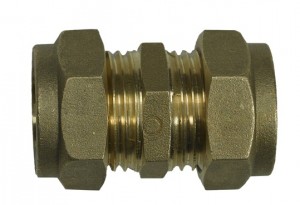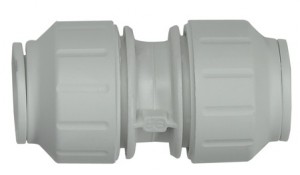Plumbing joints
Creating watertight plumbing joints has always been an area that can stir up a little anxiety in even the most proficient DIY enthusiast, and rightly so as there’s always that moment when the water gets turned back on, and you sit staring at your newly made joint, with fingers crossed, and praying that all remains dry. Therefore in this guide, I want to provide you with a few pointers when you’re making plumbing joints, and detail what I consider to be the best joint options for DIY plumbing.
Soldered plumbing joints
I don’t want to discourage people from trying to make soldered joints, but in terms of DIY, there are so many much easier options (see further down). You also need a blowtorch to create soldered joints, so in terms of safety, the stakes immediately get raised, and it really does take a lot of practice to make neat watertight joints. The big advantage of soldered joints is that they are probably the most attractive option (if done well!), and therefore if they are part of a pipe run that is visible, then there is a good argument for using them. They are also relatively cheap, so by all means, practise and see how you go, but remember to stay safe.
Compression plumbing  joints

A brass compression joint. This is a straight coupler for making the simplest joint in a straight pipe run.
The beauty of compression plumbing joints is that all you need to create them is a couple of spanners, or plier grips. Also, they can be assembled in seconds, and the only real challenges are to ensure that everything is assembled in the right order, and when you come to tightening the joint, it needs to be tight enough, but not over-tightened.
You can also use compression joints to join plastic pipes (in most instances), and if you get the joint wrong, you can take it apart and try again. Their main drawback is that they will never be the most attractive joint in the world, but if hidden under a bath or sink, then there’s no problem. For a few more detailed instructions on making this type of pipe connection, see my guide – ‘Making a compression joint’.
Push-fit plastic plumbing joints

A straight coupler for plastic push-fit plumbing. It doesn’t get much easier than this!
Plastic plumbing pipe created a bit of a revolution in plumbing when it first appeared, and in terms of DIY it really has been welcomed with open arms. It’s basically an even simpler option than using metal compression fittings, as you literally push your pipe ends into the joint and hey presto, job done. Some makes of plastic pipe joint need a bit of hand tightening of threaded sections to secure the joint, but basically that’s all there is to it. You can also use most makes of plastic joint with copper pipe as well. Personally, because of their ease of use, plastic push-fit joints are always my first choice these days and their only main drawback is that they are a bulky joint, so not the most attractive, but again, if they’re hidden away, they are just the perfect choice.
Also, if you have a problem making the joint or need some adjustment, most plastic pipe joints can simply be disassembled by hand, or using a de-mounting tool which will be designed for your particular plastic joint type. The most common reason for taking a joint apart is a leak caused by forgetting to put the little pipe inserts into the plastic pipe ends before making the joint. For more details on pipe inserts, and step by step assembly instructions, see my guide – ‘Making a push-fit plastic joint‘.
Push-fit copper plumbing joints
As well as plastic push-fit joints, you can also get copper pushfit joints. These involve the same simple principle of literally pushing your pipe ends into the joint, with no other tools required. Some varieties are also fairly streamlined and not as bulky as the plastic joints, which does make them arguably a little more attractive, if they are going to be visible. The only real drawback is their cost, which can certainly mount up if you have a lot of pipework to do. As with some plastic joints, if you need to disassemble it, you simply use a special de-mounting tool. See my guide –‘Making a push-fit copper joint’ for more details on how simple it is to make this type of plumbing joint.
Therefore, in conclusion, I’m a big fan of push-fit plumbing whether it be with plastic or copper joints, and in terms of DIY, I think they are the perfect options. Also, compression joints offer another choice for the DIY plumber, because like ‘push-fit’, there’s no need for any solder or blowtorches. Anyway, I hope this has provided you with a little more information on the pros and cons of the different plumbing joints available, and don’t forget to check out my other guides for step by step instructions on creating plumbing joints.
